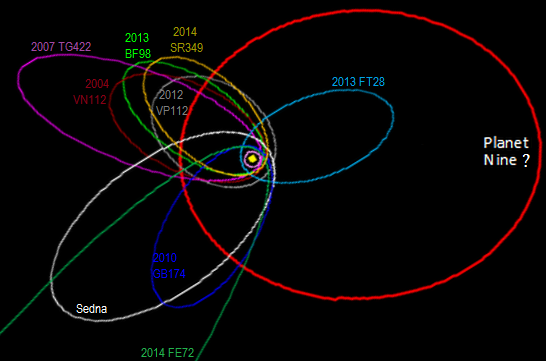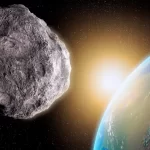Key Takeaways:
- The possible existence of a ninth planet in our solar system has intrigued scientists and caused a rethinking of solar system dynamics.
- Caltech researchers Michael Brown and Konstantin Batygin suggest this theorized “Planet Nine” may be influencing the orbits of distant dwarf planets and even affecting the tilt of our Sun.
- Solar obliquity, the tilt of the Sun, has long puzzled scientists, but a new study led by Elizabeth Bailey proposes that the presence of Planet Nine could explain this phenomenon.
- Planet Nine’s gravitational forces might be causing a wobble in our solar system, leading to the appearance of the Sun’s tilt while it’s actually the planetary orbits that are being influenced.
- Understanding this potential planet’s impact could help reconcile discrepancies in planet formation theories and aid in the ongoing search for Planet Nine.
A recent revelation has captivated the scientific community: the potential existence of a ninth planet hiding in the distant periphery of our solar system. This groundbreaking announcement sent shockwaves through the realms of astronomy and planetary science, prompting a flurry of research activity.
Caltech’s Michael Brown and Konstantin Batygin unearthed clues indicating a conceivable planet nearly 10 times the mass of Earth. This hypothetical celestial body, tentatively referred to as “Planet Nine,” could be responsible for the peculiar tilting of dwarf planets in extended orbits beyond Neptune. As publications steadily pour in on this enigmatic planet, researchers explore its potential to elucidate other enigmas within our solar system.

At a recent press event during the AAS Division of Planetary Sciences annual meeting, a fresh revelation emerged about Planet Nine’s potential impact on the Sun’s axis tilt. The study, titled “Solar Obliquity Induced by Planet Nine,” led by Caltech’s Elizabeth Bailey with Brown and Batygin as co-authors, shed light on this intriguing connection.
For roughly two centuries, scientists grappled with the Sun’s inexplicable tilt, only to realize a startling truth: it’s not the Sun that tilts, but rather us. To unravel this cosmic anomaly and its implications for our solar system, co-author Konstantin Batygin shared insights.
Interviewer: How does the alignment in our solar system unfold?
Batygin: Planetary systems typically form from flat discs. The consistent motion within our planetary system adheres to the foundational principle of planetary formation theory—planets orbit on a remarkably flat plane, inclined by minimal degrees in relation to each other.
Interviewer: What about the Sun’s role in this?
Batygin: Observations dating back to 1850 revealed the Sun’s spin axis is tilted by 6 degrees in comparison to the other planets. This deviation, though seemingly minor, stands out significantly within our solar system. While most objects rotate on a unified plane, the Sun, as the most massive entity, disrupts this uniformity.
Interviewer: Is Planet Nine’s gravitational influence causing this disruption?
Batygin: Planet Nine’s inclined orbit prompts a precession in the solar system, akin to a top spinning on a table’s surface. Over billions of years, it appears as if the Sun is tilted, but in reality, it’s the planetary orbits that undergo tilting due to Planet Nine’s influence.
Interviewer: How can a distant Planet Nine exert such influence?
Batygin: Despite being only a fraction of Jupiter’s mass, Planet Nine’s vast orbit enables it to exert substantial torque on inner planets without immense force. Its angular momentum rivals the entire solar system, thanks to its colossal orbit.
Interviewer: Were there prior theories explaining this tilt?
Batygin: In 2012, I proposed a theory akin to our current one, except it involved a companion star tilting the proto-planetary disc. Most stars likely form in binary systems, but they often lose their companions over time.
Interviewer: Does this aid in understanding planet or solar system formation?
Batygin: Understanding the Sun’s tilt challenges the fundamental principle of co-planar origins for celestial bodies. This knowledge could reconcile discrepancies in planet formation theories. Additionally, it confirms that Planet Nine’s effects align with predictions, bolstering our confidence in this hypothesis.
Interviewer: How does this impact the search for Planet Nine?
Batygin: Our findings tie the Sun’s tilt direction to Planet Nine’s orbit, reinforcing our pursuit. While not providing groundbreaking data, it reaffirms that we’re on the right track in our quest.


